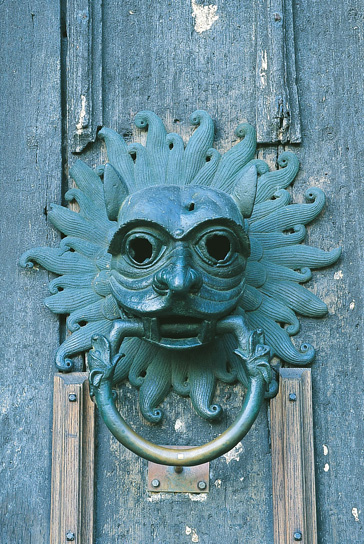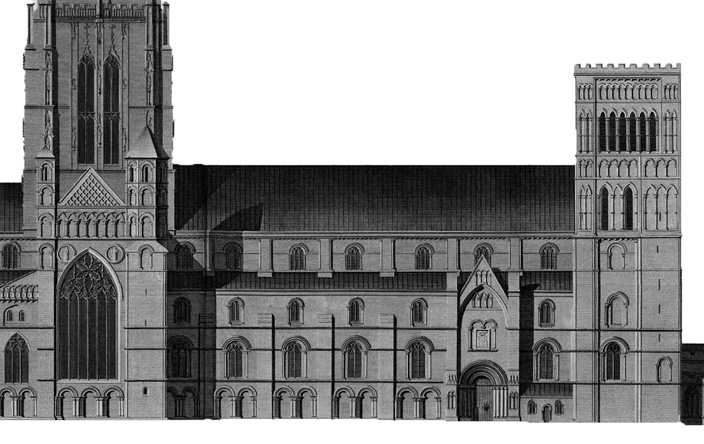
The famous sanctuary knocker. In medieval times, it was an important symbol of the Cathedral's political role.
(Note: The current knocker is a replica - the original is displayed in the Cathedral Museum).
© Durham Cathedral and Jarrold Printing
The knocker on the Cathedral’s northern door, known as the Sanctuary Knocker, played an important part in the Cathedral’s history. Those who ‘had committed a great offence,’ such as murder in self-defence or breaking out of prison, could rap the knocker, and would be given 37 days of sanctuary within which they could try to reconcile with their enemies or plan their escape.
Keeping Watch for the Seekers of Sanctuary
The Cathedral entrance has now been modified, but it originally had two small chambers above the doorway with windows where monks would be seated keeping a watch out for sanctuary seekers, to let them in promptly, at any time of the day or night.
Announcing a Sanctuary Seeker’s Arrival
When somebody did seek sanctuary in the Cathedral, the Galilee bell would be rung to announce it. The sanctuary seeker would be given a black robe to wear, with St Cuthbert’s Cross sewn on the left shoulder to distinguish them as one who had been granted sanctuary by God and his saint.
In the Abbey’s Care
The person offered sanctuary was kept in an enclosure separated from the rest of the church, and was provided food, drink, bedding and other necessities at the abbey’s expense, until the person’s safe departure from the diocese could be arranged.

A nineteenth-century visualisation of the northern facade of Durham Cathedral showing what the entrance may have looked like before the rooms above the north doorway were removed. These were where monks would have kept watch for fugitives seeking sanctuary.
A Long Tradition
The Rites of Durham, an anonymous book about Durham Cathedral that first appeared in 1593, mentions the Right to Sanctuary as a “freedom confirmed not only by King Guthred (King of Northumbria between 883-894) but also by King Alfred the Great (‘King of the Anglo-Saxons’ from 849-899).”
The Right to Sanctuary was abolished in 1624.

